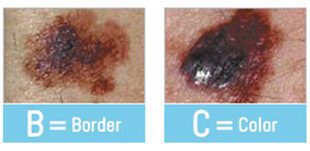By Terence Connelly, M.D. | Interventional Cardiology


For patients who have undergone heart-related events, my goal is to prevent any new events. Preventing heart attacks, stroke, aneurysms, and limb amputation is critical for longevity, mortality, and quality of life. If risk factors are ignored, the progression of vascular disease can create less optimal treatment options, outcomes, and recovery.
Your physician can provide specific tests and screenings to assess how healthy your heart is and what the next steps should be. These include blood tests, stress tests, EKGs, event monitors, vascular ultrasounds, and scans.
Understanding a patient’s overall health and family history is critical for determining vascular risk.
Risk Factors Include:
Family History—This factor is unable to be controlled. However, for many individuals with coronary artery disease in their families, living a healthy lifestyle by eating a Mediterranean diet, exercising regularly, reducing stress, and getting good quality sleep is beneficial.
Hypertension—High blood pressure is a silent killer. Hypertension leads to the development of coronary artery disease, heart attacks, and strokes. Controlling blood pressure is critical but, unfortunately, often overlooked. Elevated blood pressure doesn’t always show symptoms, so checking it at home or the drug store is wise. The new guidelines suggest a systolic blood pressure of 130 or less. 120/80 is considered an ideal blood pressure range.
Cholesterol—High cholesterol numbers are a precursor to atherosclerosis (plaque buildup in the arteries). Atherosclerosis leads to heart attacks, stroke, and angina (chest pain). There are differing levels of treating cholesterol based on previous events.
• Primary Prevention: Primary prevention is treating cholesterol before an event occurs. In this case, we try to get LDL (bad cholesterol) below 100 mg/dL, and HDL (good cholesterol) above 40 mg/dL. The total cholesterol should be under 200 mg/dL.
• Secondary Prevention: Secondary prevention is provided after a patient has had a vascular event. We try and get the LDL below 70 for these patients.
Controlling cholesterol with medications is imperative if diet alone is not sufficient. Medications such as statins and new injectable medications are for those who are not at goal.
Diabetes—For individuals with diabetes, we want to maintain strict control of their blood sugar. There is a strong correlation between diabetes and heart disease due to the damaged blood vessels from high glucose.
Controlling blood sugar with medications, diet, and exercise is vital, as is monitoring your blood glucose levels regularly.
Smoking— Smoking causes an array of adverse health effects, including increasing plaque buildup in our arteries, raising bad cholesterol, decreasing good cholesterol, and damaging vessel walls, to name a few. Talk to your physician about a specific smoking cessation plan for you.
If you want to limit your risk at any age, it’s imperative to eat a healthy diet, maintain a healthy weight, get regular exercise, cut out bad habits, limit stress, and get high-quality sleep. However, many patients will need interventions, medications, and procedures to maintain quality of life.
Treatment and Monitoring Cardiac Conditions are Paramount
If you have developed heart disease or had a coronary event in the past, you have reduced heart function and our goal is to get your heart working at its most optimal condition. Reduced heart function can lead to congestive heart failure. The cause of which may be related to coronary artery disease or heart muscle dysfunction. This can lead to serious cardiac issues that include shortness of breath, edema (swelling in the legs), arrythmias which can be life-threatening.
More than 325,000 people will experience sudden cardiac death each year. Causes include heart attack and/or life-threatening arrythmias.
Multiple treatment options are available depending on the stage of the disease. We use several combined medications, such as beta-blockers, diuretics, blood thinners, and ACE/ARB inhibitors. Surgical procedures include stents, balloons, heart valve replacements, implantable defibrillators (for arrythmias) and coronary bypass surgery. In end-stage cases, inotropic medications (change force of contractions) can be given to keep a patient’s heart pumping adequately and to maintain blood pressure.
Examinations and Routine Visits Save Lives
Getting physical examinations with your primary-care provider and seeing a cardiologist if you have risk factors or any heart disorders are the best way to maintain a healthy cardiac system. If you ignore your symptoms, they will only get worse. Being proactive about your health and practicing preventive methods is the best decision you can make.
MILLENNIUM PHYSICIAN GROUP
To schedule your appointment, please call
Dr. Connelly’s office at 941-764-5858.
941-764-5858
www.MillenniumPhysician.com
www.CharlotteHeartandVascular.com
 Southwest Florida's Health and Wellness Magazine Health and Wellness Articles
Southwest Florida's Health and Wellness Magazine Health and Wellness Articles

